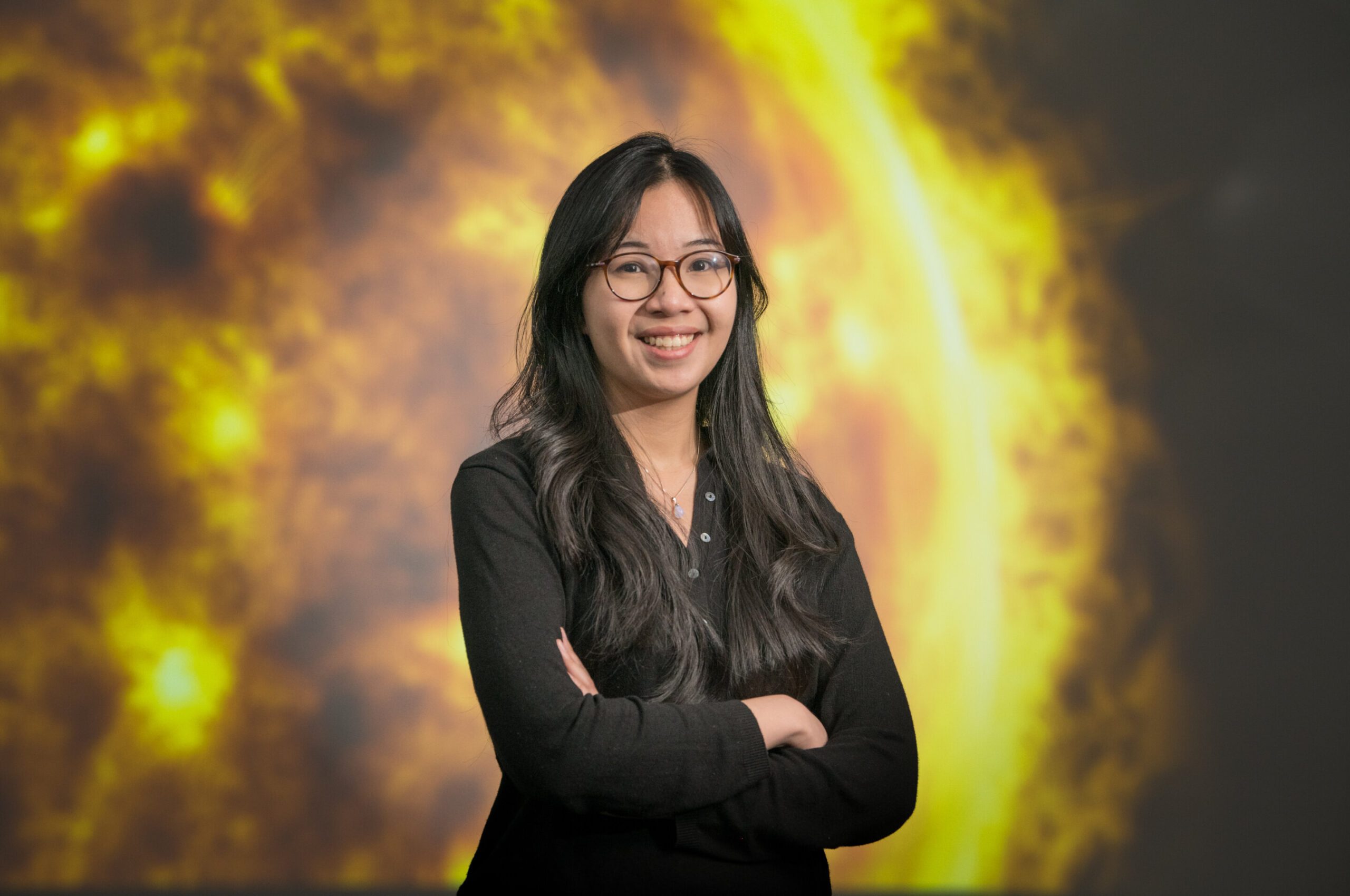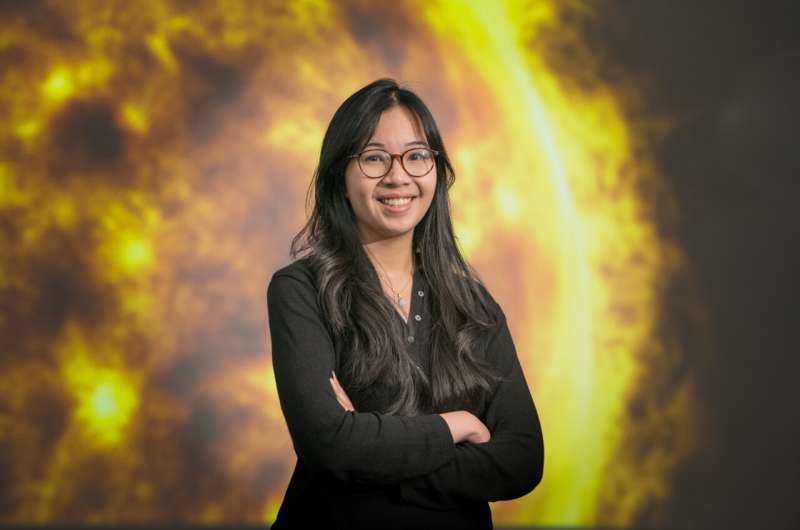

A mystery that has baffled astronomers and physicists for decades is a step closer to being solved thanks to a collaboration between Northumbria University and leading US aerospace technology organization, Lockheed Martin.
The solar corona is the outermost part of the sun’s atmosphere, and yet it reaches temperatures millions of degrees hotter than the surface of the sun. It is shaped and powered by the sun’s magnetic field, but the exact process through which the magnetic field transfers its energy to the coronal gas has remained elusive over the last 80 years.
One theory, known as the Parker nanoflare theory, which originated in 1988, suggests the heat generated when magnetic field lines within the corona break and reconnect results in a sudden burst of energy or “nanoflare.”
In 2021, a team of researchers, led by Northumbria’s Dr. Patrick Antolin found direct evidence that this reconnection produces a very rapid, sideways separation of reconnecting magnetic field lines along with a nanoflare, creating “nanojets.” This phenomenon now constitutes the tell-tale sign of the nanoflare theory and could account for the solar corona’s high temperature if prevalent in the corona.
However, nanojets are difficult to detect and predict. Any images and footage capturing the process in action has been purely by chance, with little known about how often nanojets occur and how they impact coronal heating. The small sizes and short timescales of nanojets also make it difficult for instruments to detect them with the current available resolutions.
In a bid to gather more evidence, Northumbria Ph.D. student Ramada Sukarmadji, under the supervision of Dr. Patrick Antolin, is working with scientists from the Lockheed Martin Solar and Astrophysics Laboratory (LMSAL), which is part of Lockheed Martin’s Advanced Technology Center to develop machine learning algorithms which will automatically detect and record nanojets when they occur.
Ramada is a member of Northumbria University’s world-leading Solar and Space Physics research group, which collaborates extensively with UK Research and Innovation, the UK Space Agency, the European Space Agency, the UK Met Office, and more than 40 industrial partners—including Lockheed Martin.
Dr. Patrick Antolin is a leading expert in magnetic reconnection and nanojets. His paper “Reconnection nanojets in the solar corona,” published in Nature Astronomy in 2020, reported on the first discovery of nanojets in action resulting in coronal heating.
The Northumbria University and Lockheed Martin team will analyze existing footage of nanojets captured by NASA’s Interface Region Imaging Spectrograph (IRIS) and the Solar Dynamics Observatory (SDO) Atmospheric Imaging Assembly, both of which Lockheed Martin Solar and Astrophysics Laboratory (LMSAL) designed, built, and operates. The IRIS team has devoted many weeks of observations to detecting nanojets. Using this data, the team will identify the spectral and intensity profiles unique to the nanojet when it occurs and use machine learning to create algorithms for further analysis.
Speaking about the research project, Ramada said, “Thanks to the work of my supervisor Dr. Antolin and others, we know nanojets exist and that reconnection-based heating may play a significant part in explaining why the solar corona reaches such high temperatures. However, at the moment we can only identify nanojet occurrences by eye—what we need is a way of detecting them automatically, especially given the large amount of data that has been obtained for our project.
“They are very small and the limited evidence we have suggests there are probably more than we think, but to really understand them further we need to be able to detect them as they occur.
“By analyzing data from previous occurrences of nanojets we can essentially ‘teach’ a computer to identify nanojets through machine learning. This will allow us to capture future events and really develop our understanding of this phenomena and how it contributes to the heating of the Corona.”
Speaking about Ramada’s research, Dr. Antolin said, “Working with Ramada on nanojets has been pure joy. Her will to learn, impressive skillset and great eloquence make her an excellent researcher. She has done amazing work through these years that have not only helped establish nanojets as a significant cornerstone in solar physics but also elevated their importance by making further impactful discoveries.”
Provided by
Northumbria University
Citation:
Collaborative research detects nanojets with machine learning algorithms (2023, July 3)
retrieved 3 July 2023
from https://phys.org/news/2023-06-collaborative-nanojets-machine-algorithms.html
This document is subject to copyright. Apart from any fair dealing for the purpose of private study or research, no
part may be reproduced without the written permission. The content is provided for information purposes only.